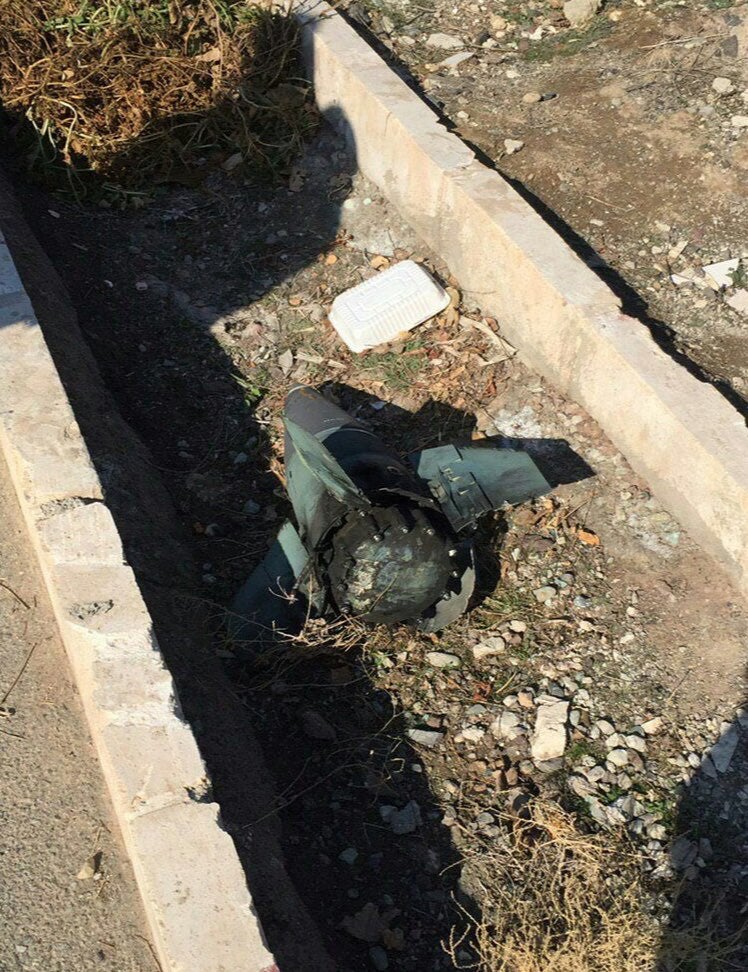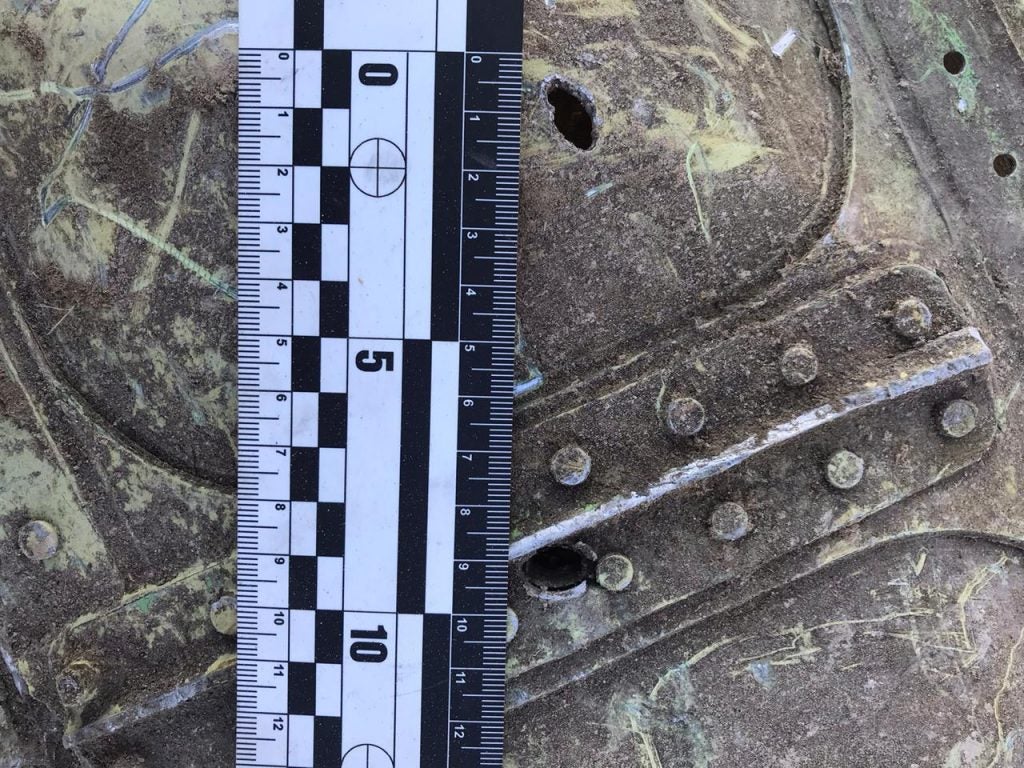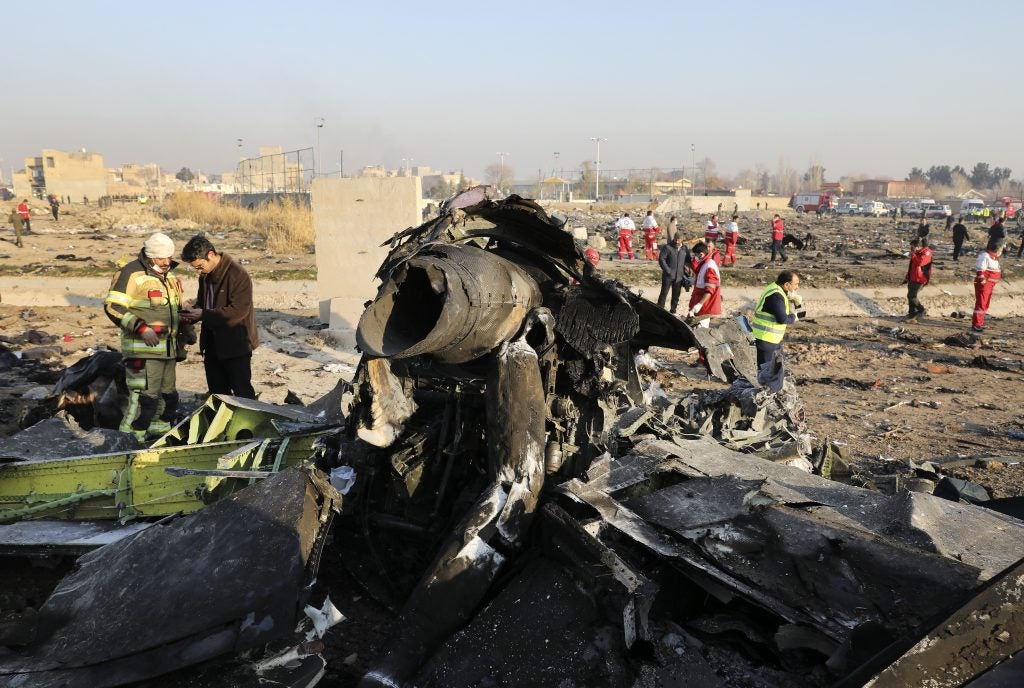Iran Admits Unintentionally Shooting Down Airliner
The Iranian government admitted, on 11 January, to “unintentionally” shooting down Ukraine International Airlines Flight 752 in the early hours of 8 January. There were 167 passengers and nine crew members aboard the Boeing 737-800. There were no survivors. The shootdown occurred shortly after Iran launched ballistic missiles at Iraqi military facilities hosting Coalition troops.
The Iranian government had initially denied that the aircraft had been shot down, claiming that it was due to a mechanical failure. US defense and intelligence officials, however, claimed that it had been shot down, stating that satellite intelligence had detected the activation of an air defense radar followed by two thermal signatures that appeared to be missile launches. This was followed by explosions and fire aboard the stricken airliner. The US claims were backed up by the United Kingdom and Canada.
Amateur videos uploaded to social media after news broke showed what appeared to be a single missile being fired at the airliner, with the airliner burning as it crashed to the ground. Photographs of what appeared to be the seeker of a Tor missile (NATO reporting name SA-15 Gauntlet) somewhere near the crash site began to circulate on social media as well, although they have yet to be geolocated.

The accusation was protested vigorously by the Iranian government, with Tehran accusing the US and its allies of engaging in psychological warfare against Iran. The Iranian government went as far to specifically threaten employees of Farsi media outlets to “not participate in psychological warfare against Iran, or drive Iranophobia”. IRGC media channels have similarly accused a journalist who shared amateur video of the SAM launch of conspiring to set them up, and directed death threats towards him.
The government of Ukraine dispatched an investigation team to Tehran shortly after the crash. The Ukrainian government initially stated that the crash was likely due to engine failure, but retracted the statement shortly afterwards. Ukranian officials interviewed by the New York Times accused Iranian authorities of violating crash investigation procedures after it was discovered that debris had been removed from the crash site by bulldozers.

The Ukrainian investigation team discovered shrapnel from Tor missiles in debris from the crash site, with the official Iranian admission of guilt coming shortly afterwards. Secretary of the National Security and Defense Council of Ukraine, Oleksiy Danilov, stated to BBC Ukraine that the discovery was what spurred the admission, saying:
“I think that Iran understood that there is no way to deny this anymore, and we had already had evidence on the Ukrainian side anyway.”
In a press conference on 11 January, the commander of the Islamic Revolutionary Guard Corps (IRGC) Aerospace Force, General Amir Ali Hajizadeh, “took responsibility” for the shootdown of the airliner, claiming that the IRGC had requested the imposition of a no fly zone, but was overruled. He stated that the operator of the air defense system had decided to engage 10 seconds after he contacted his superiors with no response following reports of inbound cruise missiles. The General reiterated that the blame for the shootdown lay with the Armed Forces of Iran and not any other organization.
The late admission of guilt resulted in street protests in Tehran, with protesters denouncing the government’s handling of the affair. Amateur footage uploaded to social media shows protesters denouncing the Iranian government as “shameless”. Propaganda posters of Soleimani put up after his death have been defaced as well.
The government responded by opening fire on protesters, following attempts to block off roads to prevent protesters from gathering, as well as deployment of tear gas against groups of protesters. The British ambassador to Iran was detained for allegedly participating in the protests, drawing condemnation from the British government.
Canadian President Justin Trudeau has demanded “full clarity” from the Iranian government over the shootdown, which killed 57 Canadian citizens. Ukrainian President Volodymyr Zelensky has insisted on a “full admission of guilt” from the Iranian government, and that the perpetrators of the shootdown must be held accountable.
The exact circumstances of the shootdown remain unclear, although a likely scenario is the Tor operator becoming fixated on Flight 752 as a pop-up threat, the kind of threat the Tor system was designed to handle. The IRGC press conference raises as many questions as it answers, with the rationale for not restricting all civilian flight activity not disclosed, why exactly it was the Iranian Armed Forces at fault and not the IRGC, the operators of the system responsible, as well as what had happened with the Iranian integrated air defense system for it to be unable to track civilian air traffic. It is highly likely that the shootdown is being used by factions within the Iranian government to fight for power following Soleimani’s death and the resulting blow to the IRGC’s prestige.

